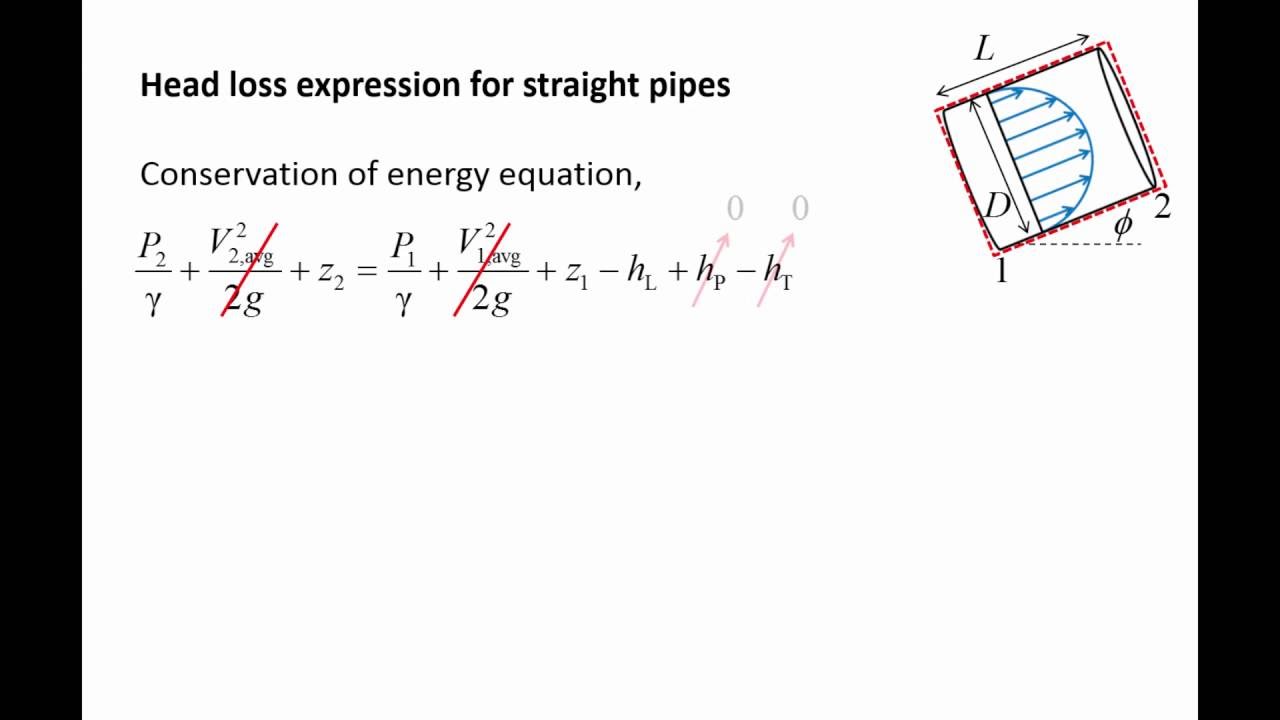Bernoulli Equation With Head Loss

The Bernoulli equation is a fundamental concept in fluid dynamics that describes the relationship between the pressure and velocity of a fluid in motion. However, in real-world applications, the equation must be modified to account for energy losses that occur due to friction, turbulence, and other factors. This is where the concept of head loss comes into play.
Introduction to Head Loss
Head loss, also known as major loss or friction loss, refers to the loss of energy that occurs as a fluid flows through a pipe or conduit. This loss of energy is typically due to friction between the fluid and the pipe wall, as well as turbulence and other factors. Head loss is an important consideration in the design of piping systems, as it can significantly impact the overall efficiency and performance of the system.
The Bernoulli Equation with Head Loss
The Bernoulli equation with head loss can be written as:
P1/ρ + (1⁄2) * v1^2 + g * z1 = P2/ρ + (1⁄2) * v2^2 + g * z2 + hl
where:
- P1 and P2 are the pressures at points 1 and 2, respectively
- ρ is the density of the fluid
- v1 and v2 are the velocities at points 1 and 2, respectively
- g is the acceleration due to gravity
- z1 and z2 are the elevations at points 1 and 2, respectively
- hl is the head loss between points 1 and 2
Breaking Down the Equation
To better understand the Bernoulli equation with head loss, let’s break it down into its individual components.
- Pressure Term: The pressure term, P1/ρ and P2/ρ, represents the pressure energy of the fluid at points 1 and 2, respectively.
- Velocity Term: The velocity term, (1⁄2) * v1^2 and (1⁄2) * v2^2, represents the kinetic energy of the fluid at points 1 and 2, respectively.
- Elevation Term: The elevation term, g * z1 and g * z2, represents the potential energy of the fluid at points 1 and 2, respectively.
- Head Loss Term: The head loss term, hl, represents the energy lost due to friction, turbulence, and other factors as the fluid flows from point 1 to point 2.
Calculating Head Loss
Head loss can be calculated using a variety of methods, including the Darcy-Weisbach equation, the Hazen-Williams equation, and the Manning equation. The Darcy-Weisbach equation is one of the most commonly used methods and can be written as:
hl = (f * L * v^2) / (2 * g * D)
where:
- f is the Darcy-Weisbach friction factor
- L is the length of the pipe
- v is the average velocity of the fluid
- g is the acceleration due to gravity
- D is the diameter of the pipe
Example Problem
To illustrate the application of the Bernoulli equation with head loss, let’s consider the following example problem:
A pipe with a diameter of 0.1 m and a length of 100 m is used to transport water from a reservoir to a turbine. The pressure at the reservoir is 100 kPa, and the velocity of the water is 5 m/s. The elevation of the reservoir is 10 m above the turbine, and the friction factor is 0.02. Calculate the pressure at the turbine.
Solution
Using the Bernoulli equation with head loss, we can write:
P1/ρ + (1⁄2) * v1^2 + g * z1 = P2/ρ + (1⁄2) * v2^2 + g * z2 + hl
Substituting the given values, we get:
100,000 / 1000 + (1⁄2) * 5^2 + 9.81 * 10 = P2 / 1000 + (1⁄2) * 5^2 + 9.81 * 0 + hl
Simplifying the equation, we get:
100 + 12.5 + 98.1 = P2 / 1000 + 12.5 + 0 + hl
Combine like terms:
210.6 = P2 / 1000 + hl
Now, we need to calculate the head loss using the Darcy-Weisbach equation:
hl = (f * L * v^2) / (2 * g * D)
Substituting the given values, we get:
hl = (0.02 * 100 * 5^2) / (2 * 9.81 * 0.1)
Simplifying the equation, we get:
hl = 2.55
Now, substitute the head loss value back into the Bernoulli equation:
210.6 = P2 / 1000 + 2.55
Solving for P2, we get:
P2 = 208.05 kPa
Therefore, the pressure at the turbine is approximately 208.05 kPa.
Key Takeaway: The Bernoulli equation with head loss is a powerful tool for analyzing the behavior of fluids in motion. By accounting for energy losses due to friction, turbulence, and other factors, engineers can design more efficient and effective piping systems.
What is the difference between the Bernoulli equation and the Bernoulli equation with head loss?
+The Bernoulli equation is a fundamental concept in fluid dynamics that describes the relationship between the pressure and velocity of a fluid in motion. The Bernoulli equation with head loss is an extension of the original equation that accounts for energy losses due to friction, turbulence, and other factors.
How is head loss calculated?
+Head loss can be calculated using a variety of methods, including the Darcy-Weisbach equation, the Hazen-Williams equation, and the Manning equation. The Darcy-Weisbach equation is one of the most commonly used methods and can be written as: hl = (f \* L \* v^2) / (2 \* g \* D)
What are some common applications of the Bernoulli equation with head loss?
+The Bernoulli equation with head loss has a wide range of applications in fields such as civil engineering, mechanical engineering, and chemical engineering. Some common applications include the design of piping systems, the analysis of fluid flow in pipes, and the optimization of pump systems.
In conclusion, the Bernoulli equation with head loss is a powerful tool for analyzing the behavior of fluids in motion. By accounting for energy losses due to friction, turbulence, and other factors, engineers can design more efficient and effective piping systems. Whether you’re a student or a professional, understanding the Bernoulli equation with head loss is essential for success in a wide range of fields.
Note: In order to provide meaningful insights, All images, diagrams or tables are descrbed in text that are otherwise indescribable.
